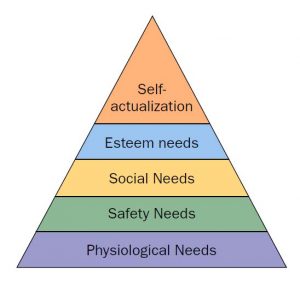Contemporary police officer recruitment efforts have encountered unparalleled challenges as compared to any other time in recent history. With few exceptions, police recruiters around the United States share daunting stories and strategies of finding an adequate pool of qualified applicants. Yet the need to reach eligible candidates has become critically important as more and more baby boomers retire, leaving agencies significantly understaffed. Most police leaders are cognizant of the importance of hiring protocols designed to attract applicants that represent the demographic of the communities they serve; yet, women and minorities, who comprise a majority of the U.S. population, still make up only a fraction of the police workforce.
While law enforcement grapples with the recruitment dilemma, an equally important challenge rests with employee retention. With the “graying of the blue” and retirement-eligible baby boomers leaving the field in record numbers, the need to find, select, and retain quality employees has taken on new urgency. The ideal construct is to consider recruitment and retention as two different sides of the same coin, deploying an approach that addresses them as component parts of the same strategy.
Generation X, now serving as the majority in executive and mid-level leadership roles, have inherited the challenging task of defining and executing a tactic that highlights the simultaneous need to recruit and retain a highly professional workforce. With a host of challenges, law enforcement leaders are wise to address this seeming quandary in tandem. Simply put, in this instance, the egg comes before the chicken. Finding, attracting, and hiring quality employees must be priority number one, but it is a priority that must be managed carefully, with an eye toward the future to ensure the fit is mutually beneficial in the long term.
Today, the mantra of both community leaders and law enforcement executives is a collective call for policing that is characterized as brain over brawn. A desirable officer is one who is guardian-centric, approachable, and has a varied skill set—a tactical social worker of sorts. As agencies examine their strategies, an important first step includes a critical review of hiring practices, specifically testing protocols and marketing. At the onset, the initial inquiry should consider the validity of the examination and background methodology to ensure any unintended bias is addressed and that requisite, job-specific performance measures are actually evaluated.
The marketing element is equally important to attracting entry-level officers. A candid review of how visual images may or may not be telling the intended story is important as they serve as a first impression of the agency. For example, do recruitment materials and social media images oversell tactical activities that don’t accurately depict daily police work? How are women and people of color represented in promotional messaging? A small marketing focus group that represents the demographic of the target applicants can provide invaluable insights and identify issues early on before they become obstacles.
An additional element organizations should consider is the degree to which societal changes have impacted young adults’ behavioral norms. Organizations struggling to hire suitable employees should evaluate how policies outlining applicant drug history, facial hair, piercings, and tattoos may have a detrimental impact on both recruitment and hiring. Clearly, these are sensitive and important considerations for all organizations and require careful review. However, evaluating the relevance and logic of policies can be an important exercise to ensure current standards are not overly rigid.
Matching the targeted message with the appropriate messenger is equally important. Police recruiters should be carefully selected to ensure the message and messenger are aligned with the organization’s needs. For example, if female and minority candidates are a priority, the location for the hiring fair and the gender, race, or ethnicity of the recruiter become important. In recent years, departments have found success courting candidates at colleges and universities. With slightly more effort, targeting schools that have strong veteran programs and sports teams provide another layer for a potentially target-rich pool of female and minority candidates. Ongoing networking and outreach with higher education contacts keeps the pipeline fresh and active. While this is but one example, being strategic about how and where recruiters spend their time is essential; agencies simply cannot afford to devote valuable resources pursuing applicants who would not be the best fit or not reflect the agency’s needs.
Women-Targeted Recruitment Examples
 Faced with the fact that women of all races and ethnicities remain underrepresented in sworn ranks, many agencies have stepped up their efforts with the goal of decreasing the gender gap. The Madison, Wisconsin, Police Department, for example, has an exceptional track record of not only hiring but promoting large numbers of female police officers. Since 2000, women have comprised nearly 30 percent of their sworn ranks (compared to the 12 percent U.S. average).1
Faced with the fact that women of all races and ethnicities remain underrepresented in sworn ranks, many agencies have stepped up their efforts with the goal of decreasing the gender gap. The Madison, Wisconsin, Police Department, for example, has an exceptional track record of not only hiring but promoting large numbers of female police officers. Since 2000, women have comprised nearly 30 percent of their sworn ranks (compared to the 12 percent U.S. average).1
Another promising approach was recently launched in Florida, where in 2016, the Miami Beach Police Department designed a campaign geared, in part, toward attracting more female officers with college degrees. This strategic approach stressed a handful of essential factors, including careful selection of the recruiting venue and the recruiter, along with the design of the messaging and marketing materials.
This multiyear approach also included a gender-targeted event hosted by the police department. The Miami Beach Police Department’s Women in Blue was a two-hour symposium that attracted nearly 100 participants and showcased Miami Beach Police Department women. An all-female honor guard set the stage, followed by brief personal stories that spotlighted current officers. The women shared personal insights concerning common barriers, how they addressed those obstacles, and how they are thriving in police work today. Additionally, many of the department’s executive staff were on-site to demonstrate their support. Deputy Chief Wayne Jones told the group of potential candidates, “Diversity happens by design; not by accident,” a comment that stressed the leadership’s endorsement for hiring a more diverse workforce. At the conclusion of the symposium, participants met with recruiters and were provided additional information including all documentation required to streamline the application process.
The Miami Beach Police Department’s recruitment strategy continues to evolve and adjust while staying ever mindful of the goal to attract and retain the best and brightest candidates, and the approach has yielded some positive results. In 2015—the year before the new recruitment approach—the department hired a ratio of 7.8 men for every 1 woman. In 2016 and 2017, the ratio was 5.7 men to 3 women and 3 men to 1 woman, respectively. By 2018, the agency increased the total percentage of female officers to 16 percent, and by July 2019, the percentage was at 18 percent. Additionally, all of the new officers have four-year academic degrees.2 Deputy Chief Jones shared his enthusiasm for the positive momentum by noting,
We are exceedingly proud of the initial success we have had in attracting and hiring women. While those efforts will continue, we are also focusing on mentorship opportunities to increase the representation of women in the organization’s leadership ranks.3
Decreasing the gender gap will continue to be a challenge, but there is reason to be optimistic, as evidenced by these modest successes.
Retaining Today’s Employees

Getting the right applicant in the door is only half the battle; understanding how best to retain today’s young adult also requires careful consideration. This second component of the bench-building process, the other side of the recruitment/retention coin, also requires a thoughtful approach.
Unfortunately, some would argue, the heyday of the qualities of the baby boomer generation, characterized as highly committed and putting work above family, is over, and those characteristics are now being replaced by starkly different personal convictions among employees. Working millennials are much more balanced in their lifestyle approach. Their mantra may be summed up best by a philosophy of “work to live,” and law enforcement organizations are wise to consider and plan for how this mind-set impacts retention efforts. Relying on the draw of a hefty pension and other traditional perks do not resonate with 21st-century entry-level young adults. If unlimited overtime is a reality in an organization, this may be unappealing to the target audience (potential recruits).
Thoroughly considering and addressing possible obstacles early on puts the organization in the best position to align the right message with the ideal applicant and, ultimately, develop a productive long-term employee. Understanding what gets an employee in the door and keeps employees engaged long term is not only a fiscally sound approach, it pays dividends by securing organizational efficiencies while developing future leaders.
The core question becomes how best to create the right organizational culture that incorporates value-added benefits important to younger employees, while simultaneously developing a professional, productive workforce to meet the needs of the organization and community.
 A quick review of Maslow’s hierarchy of needs offers a good place to start and a valid reminder.4 A sense of belonging is important for all individuals and is truly the hallmark of any healthy law enforcement organization where success and officer safety are defined by teamwork and reliance on each other. But what happens when the organization doesn’t reflect an atmosphere where employees feel valued or when their needs and priorities are minimized? Individuals want to know they are valued and need to see this reinforced behaviorally. Leaders who understand the needs of their followers and match messaging with action are in the best position to mentor, guide, and facilitate the growth of the employees and develop the next generation of police leaders.
A quick review of Maslow’s hierarchy of needs offers a good place to start and a valid reminder.4 A sense of belonging is important for all individuals and is truly the hallmark of any healthy law enforcement organization where success and officer safety are defined by teamwork and reliance on each other. But what happens when the organization doesn’t reflect an atmosphere where employees feel valued or when their needs and priorities are minimized? Individuals want to know they are valued and need to see this reinforced behaviorally. Leaders who understand the needs of their followers and match messaging with action are in the best position to mentor, guide, and facilitate the growth of the employees and develop the next generation of police leaders.
Creating the right organizational, value-added culture has recently taken shape in new and creative ways. Today, wellness rooms, private lactation spaces, fitness and mentoring programs, peer support, and topic-specific in-service or roll call training offer important benefits that demonstrates an agency’s care and commitment to officers’ long-term health. Such programs are not only best practices, they reflect an agency’s interest in an employee over the duration of his or her career. Further, on-boarding programs that incorporate not only the police employee but also the employee’s family emphasize the organization’s allegiance to retaining a healthy, productive, and committed employee. Additionally, timely research on the importance of developing proactive and continual mental health care for police officers offers a critically needed resource and illustrates one more important example of how leaders can reach and retain employees with a more holistic lens.
Finally, law enforcement agencies may simply have to wrestle with the idea that a percentage of the newly hired workforce will leave the agency well before traditional retirement age. It is not uncommon for young adults to entertain a variety of career paths, and they simply may change their job field or not stay in any profession for very long. While it may be possible to identify this during the hiring process, eliminating an otherwise excellent candidate can also be a mistake. The question organizational leaders should consider is whether or not a solid employee who may commit to the agency only for a half dozen years is worth the investment. When agencies across the United States are experiencing significant staffing challenges, this is an important philosophical conversation to contemplate.
Conclusion
It has been said that policing is among the most noble of professions. In 2020, communities will continue to call on law enforcement to address an ever-increasing and vast array of social issues, and there is little question that a very public spotlight will remain focused on mishaps and missteps. It is imperative that law enforcement organizations understand the communities they serve, proceed with caution, and do their very best to select and retain individuals who share a moral code of honor, serve to make a difference, and are proud to be representatives of this noble profession. d
Notes:
1 Dani Maxwell, “Madison Has Higher than Average Number of Female Police Officers,” WKOW, January 1, 2020.
2 Internal recruitment reports, Miami Beach Police Department.
3 Wayne Jones (deputy chief, Miami Beach Police Department, FL), email, October 2019.
4 Saul McLeod, “Maslow’s Hierarchy of Needs,” Simply Psychology, March 20, 2020.
Please cite as
Wendy Rich-Goldschmidt, “Building a Better Bench for 21st Century Policing,” Police Chief Online, April 15, 2020.



